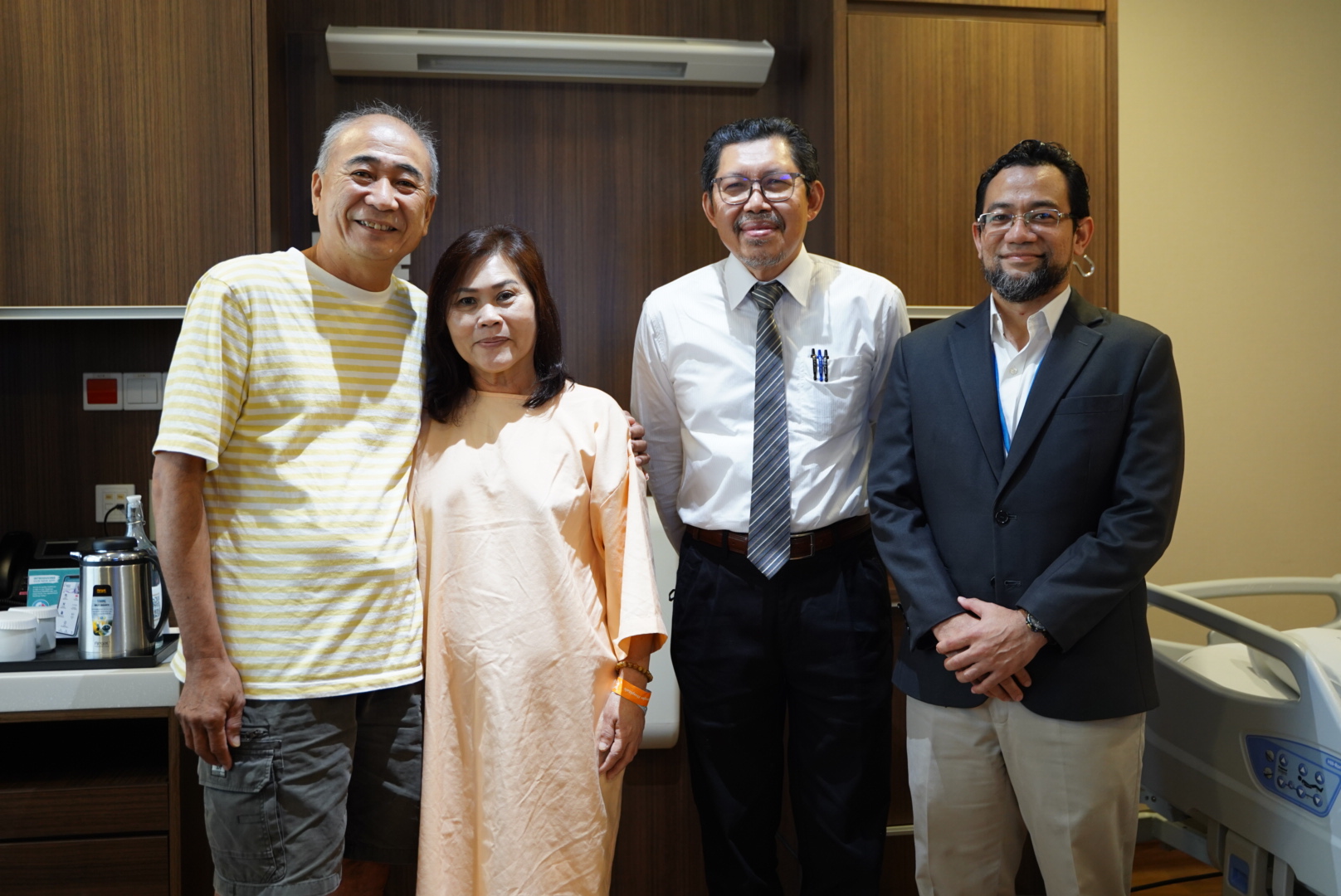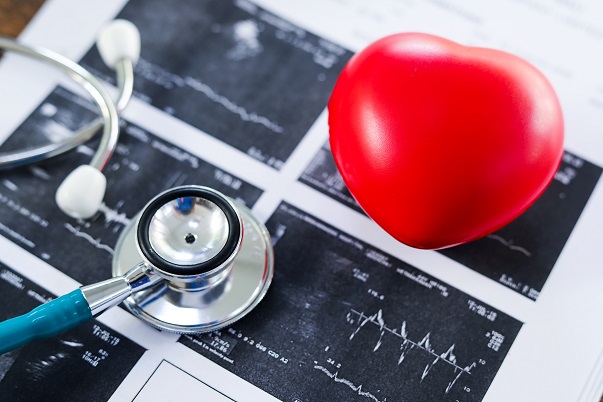Prepared by Dr Ang Chi Yong
Consultant Interventional Cardiologist
Gleneagles Medini Hospital
Coronary heart disease
Coronary heart disease is the number-one killer in the Malaysia, and it’s the most common type of heart disease. In 2014, it accounted for 13.5% of death in the country, followed by pneumonia (12%) and stroke (7%). This often preventable disease
causes the dangerous thickening and narrowing of the coronary arteries (the vessels that bring blood to the heart), which disrupts the flow of oxygen and nutrients to the heart, causing serious problems.
Without enough blood, coronary artery disease can lead to angina (chest pain). Over time, the heart has to work harder, possibly causing heart failure (when the heart cannot pump efficiently) or arrhythmia (when the heart beats irregularly or too quickly).
The damaged arteries may become completely blocked, or become prone to clotting, causing a heart attack.
Prevention
Coronary artery disease develops slowly, usually over decades, so the good news is that we have a huge window of opportunity for prevention, through risk factor control with a good lifestyle and healthy habits, as well as medication therapy if necessary.
There are multiple risk factor for coronary heart disease, some are non-modifiable like increasing age and genetic, many are modifiable like high cholesterol, high blood pressure, high blood sugar and cigarette smoking. Ideally, prevention habits start
early, but they remain important all through life. It’s never too late to effect change, though the earlier in life you do so, the greater the advantage. Smart steps to take:
- Perform routine health check by doctors to screen through various cardiac risk factor including checking blood pressure, blood tests including sugar and cholesterol level, as well as kidney and liver functions.
- Healthy diet. Eat less of the foods that add to heart problems, and more of the foods that protect the heart. Aim for an eating plan that’s low in saturated fats and trans fats, higher in monounsaturated and polyunsaturated
the fats found in olive oil and fish, high in fiber (found in plant foods), and low in salt and sugar
- Both polyunsaturated and monounsaturated fatty acids help lower LDL. Most plant-derived oils, including canola, safflower, sunflower, olive, grapeseed, and peanut oils, contain both. Fatty fish (such as salmon, tuna, trout, herring, and mackerel),
seeds, nuts, avocados and soybeans are also great sources.
- Eat foods rich in omega-3 fatty acids. Though it doesn't affect LDL cholesterol, Omega-3 has other heart benefits, such as helping to increase high-density lipoprotein (HDL, or "good") cholesterol, reducing your triglycerides, a type of fat
in your blood, and reducing blood pressure. Some types of fish — such as salmon, mackerel and herring — are rich in omega-3 fatty acids.
- Trans fats affect cholesterol levels by increasing the "bad" cholesterol and lowering the "good" cholesterol. This bad combination increases the risk of heart attacks. Trans fats can be found in fried foods and many commercial products, such
as cookies, crackers and snack cakes.
- Increase soluble fiber. There are two types of fiber - soluble and insoluble. Both have heart-health benefits, but soluble fiber also helps lower your LDL levels. You can add soluble fiber to your diet by eating oats and oat bran, fruits,
beans, lentils, and vegetables.
- Add whey protein. Whey protein is one of two proteins in dairy products - the other is casein. Whey protein may account for many of the health benefits attributed to dairy. Studies have shown that whey protein given as a supplement lowers
both LDL and total cholesterol.
- Quit smoking—or better yet, never start. Smoking is considered one of the key risk factors for heart attack. Also steer clear of second hand smoke. If a household member is a smoker, help him or her find ways to quit.
- Become more active, and stay active, all through life. A good goal is at least 150 minutes (2.5 hours) of moderate exercise each week, or 75 minutes (1.25 hours) of vigorous aerobic exercise each week. Or aim to be active for
30 minutes a day, most days of the week.
- Keep your weight within the normal range on a Body Mass Index (BMI) chart. If you’re overweight, losing just 5 percent to 10 percent of your current weight will lower your risk of developing coronary artery disease.
- Find healthy outlets for your stress. Some stress is unavoidable in life. But it tends to push us toward not-so-great habits (overeating, drinking, sitting too much). You’ll be more heart-healthy if you can offload stress
in ways you enjoy and that are good for you, such as exercise, meditation and relaxing with friends. A stress-management program can help.
Diagnosis
It’s common to first notice shortness of breath or chest pains when you exert yourself physically. Some people have mild episodes of these symptoms. For others, the first experience is more severe chest pain, even heart attack. To diagnose coronary
artery disease, your doctor will look at markers such as blood pressure, cholesterol profile and blood glucose (from a blood test) as well as your health history and family history. This information can help estimate your 10-year cardiovascular risk
(your odds of a heart attack or stroke).Depending on the symptoms you have, tests that may be given to provide additional information include:
- Electrocardiogram (ECG): Measurement of the electrical activity of your heartbeat during rest.
- Exercise stress test (Treadmill test): A test done on a treadmill to measure your heart rate and ECG changes to detect blockage when the heart has to pump harder.
- Echocardiogram: An ultrasound image of your heart to assess heart structure and function.
- Chest X-ray: An image of your heart, lungs and other chest organs.
- Cardiac CT angiogram: A CT scan provides images of the heart, showing heart arteries and plaque buildup and blockage
- Cardiac catheterization/coronary angiogram: A test in which a thin tube is inserted into an artery to check for blockages in heart arteries.
Treatment
Treatments work better early on, which is why early identification and intervention are so important. Depending on your health status and goals, there are three key approaches to treating heart disease:
- Lifestyle changes. The same steps for preventing coronary artery disease are part of a treatment approach to forestalling further problems—that is, modify the many factors that are in your control, like diet, exercise,
de-stressing and not smoking.
- Medication. You may be prescribed medications to manage the risk factors for coronary artery disease, such as high blood pressure, high cholesterol, prediabetes and diabetes.
- Procedures to help open blood vessels. Several different types of surgeries (usually outpatient) may be done to repair damage to arteries. These include:
- Coronary angioplasty. A “balloon” is inserted into the artery through a catheter (a long, narrow, flexible tube) and then inflated to enlarge the passage through the artery. Typically a stent (a wire mesh tube) is
also inserted, which forms a scaffolding around the balloon to keep the artery open. Sometimes, more advanced equipment are used like intravascular ultrasound or rotablator are used to assess the vessel, or to crack open the hardened vessel
before stent implantation.
Coronary artery bypass graft surgery. In this open heart surgery, an artery or vein from another part of the body, such as the leg, is grafted onto the coronary artery to create a new route around a blocked section. More than one graft
may be done at a time.


6fddc7d0-20f4-4624-b0a2-4e1017fc3b63.jpg?sfvrsn=404d305_6)
cdd280d3-fa9c-4039-b020-f062e04d69fe.jpg?sfvrsn=79f2453f_6)





